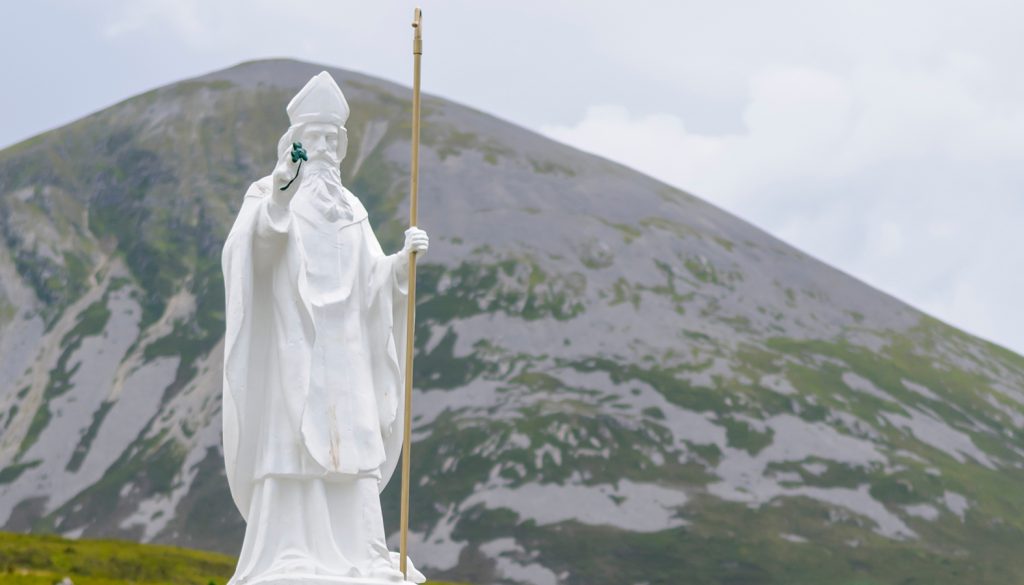I once made the mistake of mentioning while preaching about St. Anthony of Padua at an Italian parish that the saint was born in Portugal. On my way to visit Fátima I had seen the church that stands on the site where St. Anthony was born and I touched the fount where he had been baptized in the cathedral of Lisbon down the street from where his family had lived.
The pastor who heard my preaching for the feast of the saint, and who was of Italian descent like most of his parishioners, wondered in his own mild way why I had thought it necessary to bring up the whole Portuguese business.
Likewise, I guess that some Irish would be troubled if a preacher chose the saint’s feast day to point out that St. Patrick was almost certainly a Romanized Briton, and not Irish.
They might also be surprised to know that he was not the first bishop of Ireland. A short time before St. Patrick began his evangelization of the pagan Irish, a man named Palladius had been sent by Pope St. Celestine to minister to the small Christian community on the southern coast of Ireland.
The minority Christian community needed sacramental ministry within an overwhelmingly majority pagan country. Palladius was sent “to the Irish who believe in Christ.” St. Patrick, taught by the great French St. Germanus of Auxerre, a man of great missionary spirit, was sent to the unevangelized, those who as yet did not believe in Jesus Christ. His sphere of work was concentrated in the north, an area he knew from his experience of being a slave perhaps in what is now the county of Antrim.
His enslavement, according to Cardinal Patrick Francis Moran of Sydney, Australia, who wrote the biography of St. Patrick for the 1911 edition of the Catholic Encyclopedia, was “in the ways of a benign Providence,” really “a remote preparation for his future apostolate.” Much before the word enculturation was used to describe the best practice for the new evangelization, St. Patrick was an example of a missionary who knew how to work with the culture instead of against it.
His six years as a slave taught him a great deal. His prayer as a shepherd on the moonlit slopes of the Irish countryside confirmed his faith but also sharpened his skills for ministry. He could speak the language as well as a native. Experience had taught him both the lot of the poor and marginated in what was a strange land for him and the social structure of the Irish people. He had lived as they did and could make Christ’s message reach them where they lived.
One example of his insight into Irish culture was his careful preaching to the chieftains of the clans. He knew the dynamics of religious experience in Ireland, as suggested by his bold challenge of lighting the paschal fire in competition with the high king’s ceremonial start of the Beltane spring fire festival of the Druids. Cardinal Moran’s “benign Providence” was way ahead of the curve in terms of missiology.
He was a missionary and well aware that he lived, as he said in his famous “Letter to Coroticus,” “among barbarians and as a foreigner and exile.” His love for the Irish had motivated him to renounce “my fatherland and family and hand over my very life even unto death. If I am worthy, I live only for God so that I may teach the pagans even if some despise me.”
Many Irish Americans ignore that St. Patrick was also a celebrity author. Even more probably are not aware that his “Confession” was written in response to something that seems quite a la mode today, a clerical scandal. I will let St. Patrick tell the story:
“I was tried by certain of my elders who came and hurled my sins against my toilsome episcopate … after 30 years they uncovered something I had confessed before I was a deacon … I had told this sin to my dearest friend, a sin I had committed … [when]I was not yet fifteen years old.”
His sin is still a mystery, but how modern appear his sentiments about the friend who betrayed his confidence: “I grieve the more for my most intimate friend … that in the sight of all, for whatever reason, he should dishonor me publicly.”
Nevertheless, St. Patrick boldly proclaimed his gratitude to God for his ministry and regarded his “humiliation” as a purification: “Indeed not only when things go well, but also when they go badly, both in good times as in bad, I always give thanks to God who has shown me that I must never doubt Him.”
“I must never doubt Him.” You don’t always hear that mystical message on March 17. An Oxford don in a book called “A New History of Christianity” described St. Patrick, after a scholarly genuflection to the absurd thesis that he might not have existed, as a “mysterious and charismatic” leader. Among the Irish Americans, whose ancestry I share, the “mystery and charism” of the saint is sometimes lost in the green beer and the hordes of leprechaun figures and even, “horribile dictu” four-leaf clovers masquerading as shamrocks in bars masquerading as pubs.
St. Patrick, we hardly knew ye.

